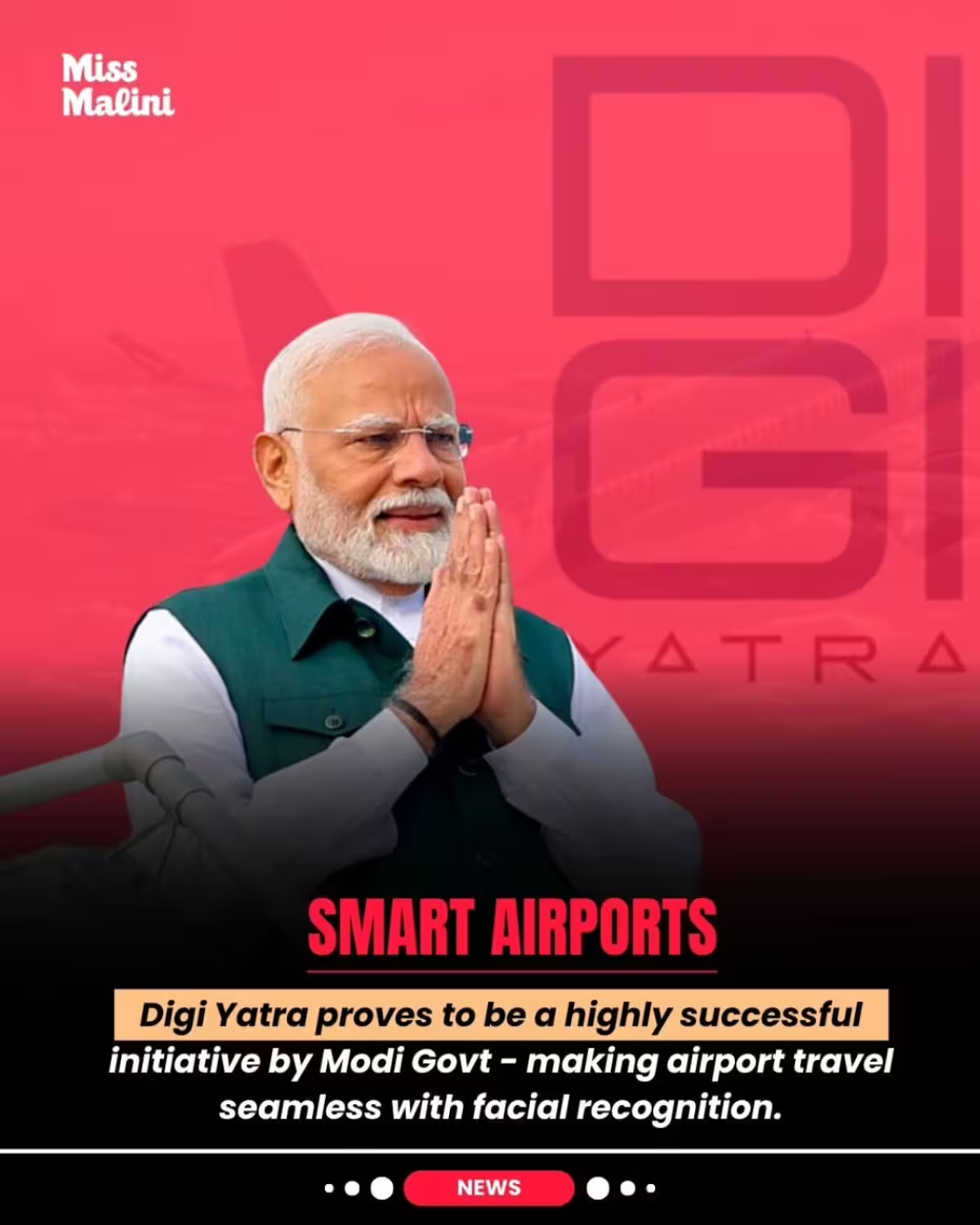Airports Embrace Digital Future
Modi Govt Spurs Tech Advances in Aviation, Elevating Every Traveler Journey in India Today

Image: Instagram
In a striking social media post, renowned digital influencer MissMalini brought attention to the sweeping technological overhaul underway in India’s aviation sector. The post, captioned “Under Modi Govt, even airports got a digital upgrade 💯” along with the hashtags #10YearsOfDigitalIndia, #SmartAirports, and #DigiYatra, highlights a significant chapter in the nation’s digital transformation. This upgrade is not only a nod to innovation but also a realization of the government’s long-term vision to make every Indian public service efficient and user friendly.
Digital Revolution In Aviation
Modern airports across India are embracing cutting-edge tech solutions as part of an extensive modernization initiative spearheaded by the Modi administration. According to the post, the transformation extends well beyond mere cosmetic improvements. It involves streamlining passenger experiences through digital check-ins, smart security protocols, and automated baggage management systems. Such measures translate into reduced waiting times and enhanced safety for millions of travelers.
Policymakers believe that by digitizing critical infrastructures like airports, India is setting a foundation for a future where efficiency and convenience are the norm. Ride-hailing apps, real-time flight updates, and digital payment interfaces are fast becoming the backbone of these smart airports, aligning with the ambitious goals of the 10-year Digital India mission.
Transformative Tech Under Modi Government
Under the leadership of Prime Minister Narendra Modi, the initiative to modernize airports reflects broader national priorities. The digital upgrade of airports has been steadily implemented over the years, with technologies such as DigiYatra being deployed to simplify immigration procedures and overall airport navigation. DigiYatra, for instance, uses biometric technologies and cloud computing to facilitate seamless movement for passengers.
MissMalini’s social media mention not only brings the spotlight to these infrastructural improvements but reinforces the idea that technological innovation in the public sector is increasingly becoming integral to everyday life. Her post reinforces the idea that the intersection of governance and technology can yield tangible benefits for the common man. The digital evolution of airports is a testament to how government initiatives are aligning with the global pace of technological change.
Boosting Passenger Convenience And Efficiency
The benefits of these initiatives are immediately evident in the passenger experience. Frequent travelers report smoother check-in processes and clearer communication regarding flight statuses. Moreover, the use of digital platforms minimizes human error and enhances the overall security of airport operations. By integrating real-time data and automated systems, airport authorities can quickly adapt to disruptions and manage passenger flow more efficiently.
Beyond operational enhancements, the digital upgrade also opens up opportunities for sustainable practices. Smart systems help in energy conservation by optimizing lighting, climate control, and other infrastructural utilities. As a result, these digitally enabled airports contribute not only to improved passenger service but also to environmental sustainability.
MissMalini, known for her incisive commentary on pop culture and lifestyle trends, has now shown her support for government policies aimed at modernizing crucial sectors. Her engagement with this subject adds a celebrity lens to a largely technical and administrative issue, thereby sparking wider public interest. Her influential voice plays an important role in demystifying the complex interplay between policy and technology for the general audience.
While some critics have debated whether such colossal upgrades could lead to privacy concerns or increased bureaucracy, the overall sentiment appears decidedly positive. Officials insist that robust security protocols accompany every digital rollout, ensuring that both convenience and data privacy of passengers remain paramount.
The transformation also mirrors similar trends in other parts of the world, where airports are evolving into technology hubs. Comparisons with leading international airports highlight that India is rapidly catching up, demonstrating its readiness to participate in the global digital economy. Moreover, the progress thus far is expected to spur further investments not only in aviation but also in other infrastructural sectors such as public transport and urban planning.
For the nation’s tech enthusiasts and common travelers alike, the digital upgrade of airports underlines a future where efficiency, convenience, and sustainability are interwoven. The initiative is a clear reflection of India’s ambition to transform everyday services and bolster its position as a leader in digital innovation.
The continuing rollout of projects like DigiYatra not only underscores the government’s commitment to modernization but also illustrates how public-private collaborations are setting the stage for a smarter, more responsive infrastructure. As more airports adopt these digital solutions, travelers will increasingly notice a seamless blend of technology and service quality, marking a significant milestone in India’s journey towards a fully digital society.
Read full bio of Glendon Moss
























